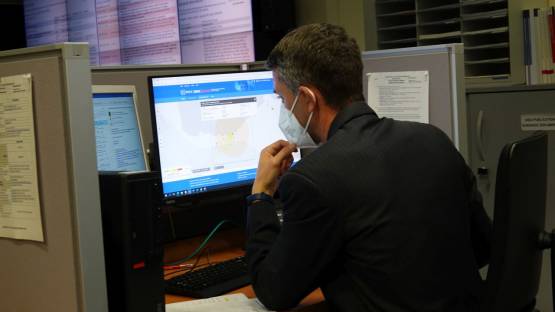Countries need to work closely together in the event of a nuclear emergency, so sharing experience and improving emergency preparedness are key tasks stemming from the IAEA’s mandate. Those responsible for emergency preparedness at the national level – officially referred to as Competent Authorities – met in Vienna last week at the 11th Meeting of the Representatives of Competent Authorities identified under the Early Notification Convention and the Assistance Convention, and discussed ways to ensure that the necessary expertise, services and equipment are available promptly upon request by any government in the event of a nuclear or radiological emergency.
In his remarks, IAEA Director General Rafael Mariano Grossi referred to the role of the two conventions in relation to nuclear facilities in Ukraine. “Everything we have done to assist Ukraine in maintaining nuclear safety, security and an adequate level of safeguards; everything we have done to inform the wider world of the situation during this first military conflict fought in the direct proximity of a major nuclear power programme, we have done through the framework that many of you have built and improved in the years leading up to today…this framework is being tested like never before,” he said.
A strong and integrated international framework for notification and assistance in the event of a nuclear emergency is essential to protect people and the environment from the harmful effects of ionizing radiation, said the meeting’s Chair, Faizan Mansoor, Head of the Pakistan Nuclear Regulatory Authority. “This meeting is essential, since it gathers the world’s experts in nuclear emergency preparedness and response to determine if our arrangements remain effective when emergencies occur under increasingly complex conditions,” he said.
Competent Authorities are the entities designated by their governments to carry out specific duties with respect to issuing and receiving information relating to nuclear and radiological emergencies under these conventions. They meet every two years to evaluate and strengthen the implementation of the Early Notification Convention and the Assistance Convention. Both conventions were concluded in 1986, in the immediate aftermath of the accident at the Chornobyl Nuclear Power Plant, and establish the international framework for the exchange of information and the prompt provision of assistance in the event of a nuclear or radiological emergency, with the aim of minimising the consequences.
“Radiation does not recognize borders, and countries need to work together swiftly to prevent people from coming to harm in the wake of a transboundary radioactive release,” said Carlos Torres Vidal, Director of the IAEA’s Incident and Emergency Centre.






